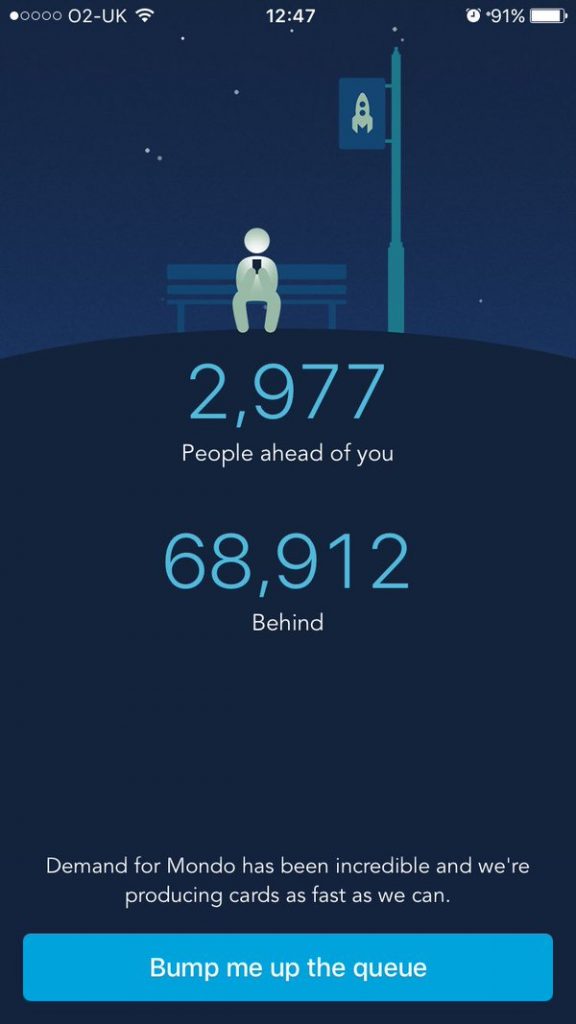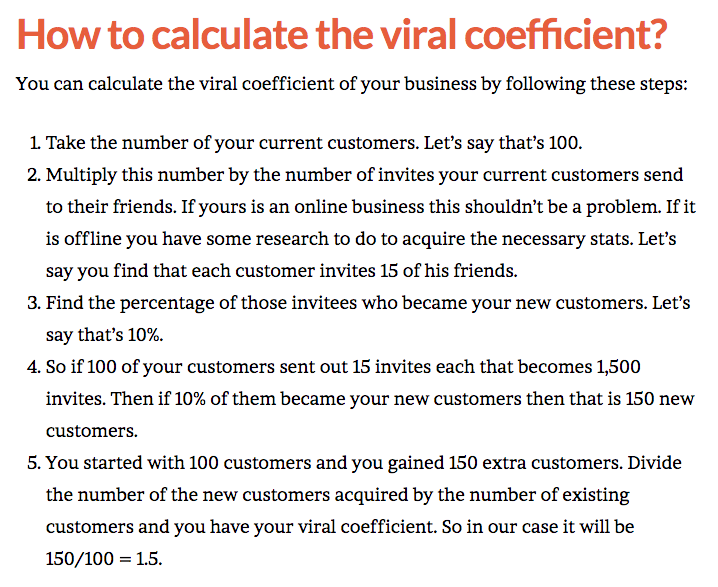In an ideal world, you’d only have to attract a few people to your product. They’d love it so much, they’d tell their friends, who in turn would tell their friends, and you’d never have to do any marketing.
This is the principle behind viral growth which is very similar to traditional word-of-mouth. The idea is that if each customer refers one or more new customers, your product will see compounding growth. Unlike word-of-mouth, viral growth involves users spreading the word about your product in the context of using it.
This post covers the basics of viral growth including what exactly it is, how to measure it, and how to build your product to accommodate it. At the end, you will find links to some of the best articles on all aspects of viral growth for entrepreneurs, product marketers and engineers.
Viral loops
The key concept of viral growth is the ‘viral loop’ which investor and startup advisor, Andrew Chen defines as:
“The steps a user goes through between entering the site to inviting the next set of new users.”
Essentially, viral growth is the same as word-of-mouth or user-get-user referrals. However, instead of hoping that your users decide to tell their friends about you on their own, viral loops are promoted by building features into your product that make sharing faster, easier or more rewarding for your users.
As VC David Skok points out, you want to be thinking about virality right at the very beginning of your product journey…
“Virality is not a marketing strategy that can be executed by the marketing department. It has to be built into your product right from the beginning. This is a function that needs to be thought through by the product designers and developed by the engineers.”
The Viral Coefficient
The viral coefficient is a number that represents the virality of your product. David Skok defines the viral coefficient as:
“The number of new customers that each existing customer is able to successfully convert… The formula to calculate the viral coefficient is pretty simple: multiply the number of invitations by the conversion rate.”
One startup we have been working from has been using this approach from appvirality.com:
The viral coefficient must be greater than 1 to achieve viral growth.
You will find in depth examples of this in both David Skok’s post and the one on appvirality.com. The crux is, if the viral coefficient is less than one, the number of new users acquired through referrals will continue to decrease until it is zero.
One startup we work with raised the following issue:
“We can’t measure the ‘number of invites your current customers send to their friends’, as it is a unique link that they can share via Twitter, Facebook etc and we can’t measure how many people see it.”
They wanted to know if they divided the number of users who joined via a unique referral link by the total number of current users – would they be left with the viral coefficient?
Our response came in two parts:
-
That calculation is currently the best you’ve got, so use it, and make sure that anyone that looks at your numbers has a “key” to explain how you’ve calculated the bits.
-
You’ve immediately identified an area to enhance on the site/app – improve the referral mechanism so that it gives you more accurate data.
Now that we’ve covered some of the theory behind viral growth loops, let’s take a look at them in action…
Pre-launch growth mechanisms
Viral growth mechanisms are typically built into products, but there’s no reason you can’t start using them before you have a public version of your product live. Note that ‘virality’ (a viral coefficient of greater than 1) is the result while viral growth mechanisms, are features put in place to promote virality.
One of the best examples of pre-launch viral growth mechanisms recently has been startup bank Monzo, who allowed users to be bumped up the waiting list every time they referred a friend. Read our interview with Monzo’s head of marketing, Bailey Kursar, here.

This blog post on Kissmetrics talks about this mechanism in a bit more detail and is definitely worth a read.
Post-launch growth mechanisms
These growth mechanisms are embedded in your product and should be built in from the beginning, not retrospectively added.
There are two main types:
User-instigated
These growth mechanisms are typically prompts that reward the user for inviting others. Dropbox, for example, will give users more free storage for referring other users. LinkedIn asks you to invite people or import your contacts, which in turn, helps you get more use out of the network.
In the context of use
Some businesses use their own products as a means of reaching new users through existing ones.
Pedro Magriço, Director of Growth at Typeform describes Typeform as ‘a viral product’:
“People and businesses use Typeform to create and share typeforms which carry our ‘Powered by’ branding, which in turn generates more users… This is the core of our growth engine. It’s awesome because it gets us a ton of free traffic and customer acquisition.”
Check out Chapter 7 of Neil Patel’s “The Definitive Guide to Growth Hacking” for more examples of viral growth loops including:
- Features for users to send invitations to their friends
- Allowing users to import contacts
- Simple and rewarding social sharing
- Incentives/rewards for referrals
- Partnerships/integrations eg Spotify and Facebook
Testing and optimisation
Like any other features of your product, viral growth mechanisms should be continuously tested and optimised
“In this stage, there are a lot of common fixes that you’ll want to consider:
- Shortening the flow of pages (can you shrink a 5 page funnel down to 2?)
- Rearranging UI elements to emphasize next steps
- Testing different value propositions for going through the flow
- Increasing the # of people invited
“This optimization stage creates great conflict for product and customer-oriented people. Oftentimes, to get a number to move from 10% to 30%, there’s temptation to do things that users may not be happy with. This might include things like asking for invites multiple times throughout the initial session, presenting an opt-out process for selecting friends, etc. These are all bad and need to be fixed in order to create a long-term sustainable viral loop.
“This optimization step can take a very long time (months is not uncommon) as you zero in on the dozens of small and large changes needed to create a viral loop.”
People refer products they love
It may seem obvious but don’t forget that people will only refer products that they love.
It might be worth running a simple poll asking users “on a scale of 1-10, how likely are you to refer your friends to Our Product?” If users claim they would refer, this could be a sign that you need to improve your referral mechanism. If they don’t want to refer, it’s likely that the problem is much deeper within your product.
“Users refer products and services they truly love. Don’t forget this simple yet fundamental reality. If your product doesn’t inspire users to share it, they won’t, no matter how easy you make it. All of the insights that follow are predicated on the fact that you have a product that people love, but just don’t share that often.
“Users refer products and services they truly love. If you want your referral program to work, make sure they love your product first.”
– Morgan Brown, co-author Growth Engines with Eric Ries
Further reading
The following list of resources are the best articles we’ve come across on the principles of viral growth.
Beginner
- What’s your viral loop? Understanding the engine of adoption by Andrew Chen
- 4 Viral Sharing Tactics For Your Product Launch Strategy by Chloe Gray
- LinkedIn Growth Engine: The Never Ending Viral Loop by Morgan Brown
- AMA with Pedro Magriço, Director of Growth at Typeform
Intermediate
- Quicksprout Definitive Guide to Growth Hacking Chapter 7 by Neil Patel
- 5 crucial stages in designing your viral loop by Andrew Chen
- 7 Ways to Energize Your User Referral Program by Morgan Brown
Advanced
- Lessons Learned – Viral Marketing by David Skok
- What Is Viral Coefficient And Why You Need It To Make Your App Go Viral by Laxman Papineni
Get in touch with Simpleweb today to discuss how we can help you grow your business.




